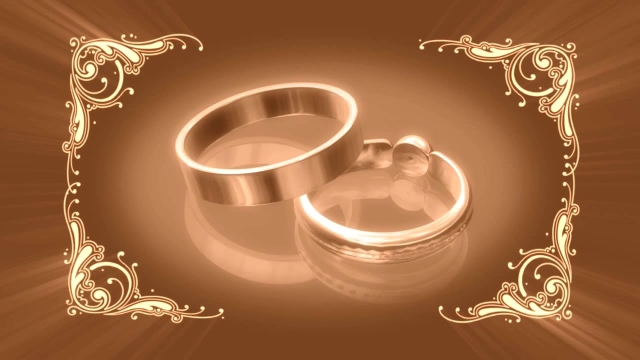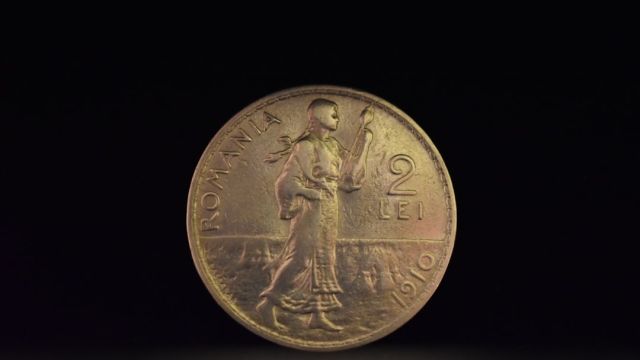Bling and Forever: Unveiling the Hidden Story of Wedding Bands

Planning a wedding is filled with countless decisions, from the venue to the flowers and, of course, the wedding bands. These small but significant symbols hold deep meaning and serve as a constant reminder of the union between two individuals. While they may seem like mere accessories, wedding bands have a rich history and carry with them traditions that transcend time and culture. Whether adorned with diamonds, engraved with initials, or simply left plain, these bands hold a story waiting to be unveiled.
For centuries, wedding bands have been a symbol of commitment and eternal love. The circular shape represents endless love, with no beginning or end. The exchange of rings during a wedding ceremony signifies the couple’s pledge to stand by each other’s side through thick and thin, for better or worse. It is a promise to create a bond that will last a lifetime.
Beyond their symbolism, wedding bands also hold cultural significance. Different cultures have various customs and traditions surrounding the design and wearing of these precious bands. From intricate patterns reflecting the couple’s heritage to specific gemstones believed to bring good luck, these bands encapsulate the beauty of cultural diversity and individuality. Whether it’s the simplicity of a plain gold band or the opulence of a diamond-studded creation, wedding bands are a unique reflection of the couple’s journey together.
As we delve deeper into the hidden story of wedding bands, we will explore their origins, their evolution throughout history, and the diverse traditions associated with them. Join us as we unravel the tales behind these shining symbols of love, understanding the profound meaning they hold and the unbreakable bonds they represent. Get ready to discover the fascinating world of wedding bands, where bling meets forever.
Evolution of Wedding Bands
Wedding bands have come a long way since their inception. They hold a rich history that dates back centuries, reflecting the changing cultural and social norms of different civilizations.
In ancient times, wedding bands were often made from materials such as bone, leather, or woven plant fibers. These rudimentary bands symbolized the union of two individuals in matrimony and were primarily worn by the bride. They were simple and functional, serving as a visual representation of the commitment between a couple.
As societies became more advanced, so did wedding bands. During the Middle Ages, metal bands became popular, typically made from silver or gold. These bands were often engraved with intricate designs, incorporating symbols of love, fidelity, and prosperity. With the rise of Christianity, wedding bands also took on religious significance, with some featuring crosses or other religious motifs.
The concept of the engagement ring emerged during the Renaissance period, paving the way for the modern wedding band tradition. Engagement rings were given to signify a promise of marriage, while the wedding band was worn during the actual marriage ceremony. These bands were usually plain and unadorned, symbolizing the eternal bond between spouses.
The evolution of wedding bands continues to this day, with a wide variety of styles and materials available. From traditional gold bands to modern designs with diamonds and gemstones, wedding bands now allow couples to express their own unique style and personal taste. While the materials and designs may have changed over time, one thing remains constant – the significance of the wedding band as a timeless symbol of love and commitment.
Symbolism and Meaning
Wedding bands have been cherished symbols of love and commitment for centuries, representing the eternal bond between two individuals. These simple yet powerful pieces of jewelry hold deep sentimental value, as they serve as constant reminders of the vows exchanged during the wedding ceremony.
A wedding band is typically worn on the fourth finger of the left hand, known as the "ring finger." This tradition dates back to ancient times when it was believed that a vein in this finger, called the "vena amoris" or the "vein of love," directly connected to the heart. By wearing the wedding band on this finger, it symbolizes the direct connection and everlasting love shared between partners.
The circular shape of a wedding band is also significant. Without a beginning or an end, it represents the unending love and commitment between spouses. It serves as a reminder of the eternal nature of their relationship, and the continuous circle signifies the unity and wholeness of their union.
Furthermore, many wedding bands are adorned with diamonds or other precious gemstones, adding an extra layer of meaning. Diamonds, renowned for their strength and durability, symbolize the enduring nature of love, while other gemstones may carry additional significance based on their unique properties.
In conclusion, wedding bands hold deep symbolism and meaning within them. From the placement on the finger to the circular shape and the choice of gemstones, each aspect contributes to the representation of eternal love, commitment, and unity between two individuals.
Exploring Different Styles
In the world of wedding bands, there is a seemingly endless array of styles to choose from. From classic and traditional to modern and trendy, there is something to suit every couple’s unique taste and personal style.
One popular style of wedding band is the classic gold band. This timeless choice represents the eternal commitment of marriage and is a favorite among those who appreciate the beauty of simplicity. Available in various shades of gold such as yellow, white, and rose, these bands can be customized with different finishes and textures to add a touch of individuality.
For those looking to add a bit more sparkle to their wedding band, the diamond-studded style is a perfect choice. Adorned with glistening diamonds, these bands exude elegance and luxury. Whether set in a pave or channel setting, the diamonds on the band can be arranged in different patterns to create a unique and eye-catching design.
If you prefer a more unconventional and contemporary look, alternative metals like tungsten, titanium, and stainless steel are gaining popularity. These metals offer durability and a sleek, modern aesthetic. With their unique finishes and textures, they provide a distinct and edgy twist to the traditional wedding band.
In conclusion, when it comes to wedding bands, there is no shortage of styles to explore. Whether you prefer a classic gold band, a diamond-studded design, or something more unconventional, the options are endless. It’s important to choose a style that not only reflects your personal taste but also symbolizes the everlasting love and commitment you share with your partner.


